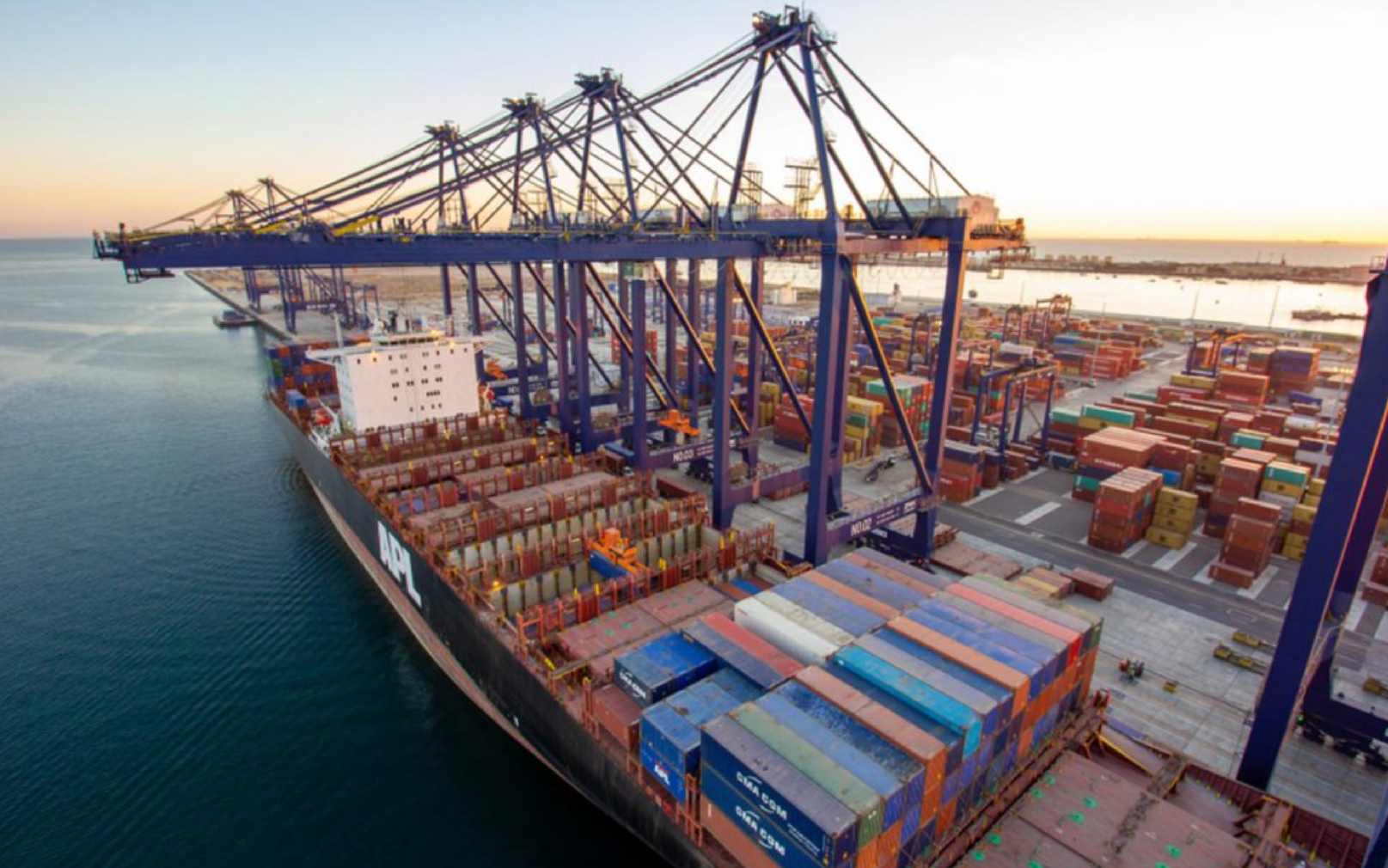
Seaports are crucial in providing opportunities for economic growth, enhancing regional development and contributing to Pakistan’s GDP.
Dr. Anjum Sarfraz
Seaports are a vital component of a country’s economy as they serve as gateways for international trade and commerce. They play a critical role in facilitating the movement of goods and commodities across borders and connecting countries to the global market. Seaports provide an essential infrastructure for the transportation and handling of raw materials, finished goods, and other products.
Countries that have developed seaports equipped with advanced equipment and technology can efficiently handle cargo, thereby providing a competitive edge in global trade. These ports also act as a source of employment, generating jobs for the local population and attracting investors to establish industries in their vicinity. Seaports are crucial in providing opportunities for economic growth, enhancing regional development and contributing to the national GDP.

Pakistan, with its long coastline of over 1001 km, has significant potential to develop its seaports to bolster its economy. Karachi port, operated by Karachi Port Trust (KPT) since 1887, is one of the busiest and most important seaports in the region. The port serves as a hub for trade between Pakistan and other countries, including China, the United States, and the United Kingdom. Additionally, the port of Bin Qasim and the newly built Gwadar port offer enormous opportunities for growth and development.
Seaports play a crucial role in the economic development of Pakistan, given the country’s vast coastline of over 1001 km. With the right investments and strategic planning, seaports can be a significant driver of growth and development in Pakistan. Here are some ways seaports can contribute to Pakistan’s economic development:

Firstly, seaports can help boost Pakistan’s international trade by providing an efficient gateway to the global market. By upgrading the existing ports and building new ones, Pakistan can significantly increase its import and export trade volume, providing a much-needed boost to its economy.
Secondly, seaports can create numerous employment opportunities for the local population. The development of seaports can lead to the creation of jobs in areas such as port operations, logistics, shipping, and related services, thereby improving the livelihoods of the local population.
Thirdly, seaports can attract foreign investments and stimulate industrial growth. The presence of well-developed ports can encourage foreign investors to set up industries in the vicinity, which can leverage the port’s infrastructure for importing raw materials and exporting finished products.

Fourthly, seaports can contribute to the development of other sectors such as tourism, hospitality, and transportation. The presence of modern and efficient ports can attract tourists and boost the hospitality industry, while also improving the transportation network and connectivity. It has two wharves, West and East, which have 33 berths including 3 oil piers. Ships up to 13.0m draft can be berthed. Out of these five on West and six on East wharves have been given on lease to Terminal Operators, Karachi International Container Terminal (KICT) and Pakistan International Container terminal (PICT) following Land Lord Port Strategy.
The recently built extension of Karachi port at South Wharf has quay wall of 1500 m which can dock mostly container ships up to 16m draft. It is operated by South Asia Pakistan Container Terminal (SAPT) equipped with state of the art cranes and is completely computerized to handle containers.
Cargo handling capacity of KPT is 125 million tons for all types of cargo, including 4.1 million containers. Last fiscal year, it handled 52 million tons. It has much more capacity to handle cargo. Railway share to lift cargo is only 5% which needs to be increased. As the port is located at the center of the city, it is causing traffic congestion in Karachi especially in the vicinity of port area because of movement of cargo.
It is also hampering the operation of the port. In the past three years it has handled, 229,205 containers as transit cargo for Afghanistan, 139 for CAR states and nil for China. It has handled very less volume of transshipment cargo although South wharf has 16m draft and state of the art facilities. It is mainly because of its location away from the main shipping routes. The railway is actively considering the Dedicated Freight Corridor (DFC) to increase the lifting of cargo from KPT.

A feasibility study is being carried out to establish rail links of Karachi port terminals with Pipri on Public Private Partnership (PPP) to take cargo on rail to Pipri. From there, the cargo can be taken upcountry on trucks and rail. It will increase the efficiency of the port & railway share and also considerably reduce the traffic congestion in Karachi.
Port Bin Qasim is also located in Karachi which is functioning since 1980. It has 18 berths, 16 are operated by the terminal operators. Maximum permissible draft is 13.0 m. It has cargo handling capacity 83 m tons where as it has handled 55.0m in fiscal year 2022.
It can handle all types of cargo including LPG, LNG and coal. It has taken the shape of energy hub of Pakistan. This port in the past three years has handled 23,360 containers for Afghanistan, 51 for CAR states, and none for China as a transit cargo, while the transshipment cargo was only 6415 containers which is nominal for such a big port. Since this port is also not on the main shipping routes, therefore it has not been able to attract transshipment cargo. The volume of transit trade handled is also not impressive.
The Gwadar port has strategic location at the mouth of the Persian Gulf, just outside the Strait of Hormuz, in the proximity of main shipping routes. Its location is considered most suitable to operate as a transshipment hub. It is functional since January 2007.
The primary objective is to act as an alternate port of Pakistan, handle transit and transshipment trade of China, Afghanistan, and CAR state, along with facilitating the supply of cargo to the hinterland of Pakistan and the development of Balochistan province, especially the Gwadar region. Its main features include quay wall of 602 meters (3 multipurpose berths including RO-RO), 100 m service berth, design depth 13.8 meters and alongside berth of 14.5 m.
However, the present average depth is 11.5 m. The backup area is 383,000 square meters, sufficient to stack the cargo for transit, transshipment, and other purposes. The Port of Singapore Authority (POSA) was the first Concession Holder to operate the port from Feb 2007 to Feb 2013.
It handled only 162 ships in 6 years. The second Concession Holder for port operations from Feb 2013 till to date is China Overseas Port Holding Company (COPHC). It has handled 223 ships in 9 years till June 2021. Total transit cargo handled for Afghanistan in the years 2020 and 2021 is 110355 tons and nil for China and Car states. This port has not yet started handling Transshipment cargo.
The sea ports in Karachi have hinterland connectivity by eastern route by motor way / express way to Burhan interchange. From here for Khunjerab pass there is motor way/ express way up to Mansehra. Here on ward up to Khunjerab Pass via Gilgit, either it is a two-lane road or a two-way dual carriageway. In short from Karachi up to Khunjerab Pass 22 wheeler trucks can utilize the road connectivity.
Similarly, from Karachi up to Khyber Pass the road network is available for the 22 wheeler tucks up to Khyber Pass via Burhan interchange. These ports have rail connectivity up to Havelian and Peshawar from here the cargo can be transported by trucks to Khunjerab and Khyber passes. Gwadar port has connection by road with the neighbouring countries through western route via Quetta, DI Khan and Burhan interchange to Khunjerab and Khyber passes.
However, volume of transit trade handled by the three ports is very less as already stated. Our government needs to actively pursue the governments of China, Afghanistan, and CAR states for the handling of their trade through Pakistani ports. The route is much shorter and our ports are well equipped and have the capacity to handle their trade.
Moreover, the security conditions in Afghanistan have much improved.
Gwadar port has right location to operate as a transshipment hub. Containers shipped from the Far East, Red Sea, and African countries on the bigger ships destined for the Gulf countries and other regional ports can be unloaded here and shipped on feeders to these ports and vice versa.
However, to make Gwadar port functional for transshipment, the channel depth is required to be increased to the designed depth 14.0 m. Functioning of the Special Industrial Zone at Gwadar may be done on priority. State-of-the-art cranes and associated equipment need to be installed by the concession holder.
Moreover, the telecom network, especially Wi-Fi needs improvement in the Gwadar area. The ports in the vicinity of Gwadar, like Salah, Sohar, Duqm of Oman, and Jebel Ali of UAE are likely to give tough competition, which can be overcome by offering ease of business and competitive rates.
Ports in Karachi and Gwadar have capacity, are sufficiently equipped, and connectivity with China, Afghanistan, and CAR states to handle their cargo. The government needs to actively negotiate with these governments to handle their trade. Gwadar port has right location in the proximity of shipping routes to operate as a transshipment hub.
However, dredging of the channel by Gwadar Port Authority, and to install state of the art equipment by the Concession Holder, COSCO needs to be done on priority. The increased operations of ports will certainly enhance the economy of Pakistan in addition to creation of jobs which are also a dire need in the present economic conditions.

The writer is a former senior Research fellow NIMA & strategic Vision Institute (SVI) Islamabad.

